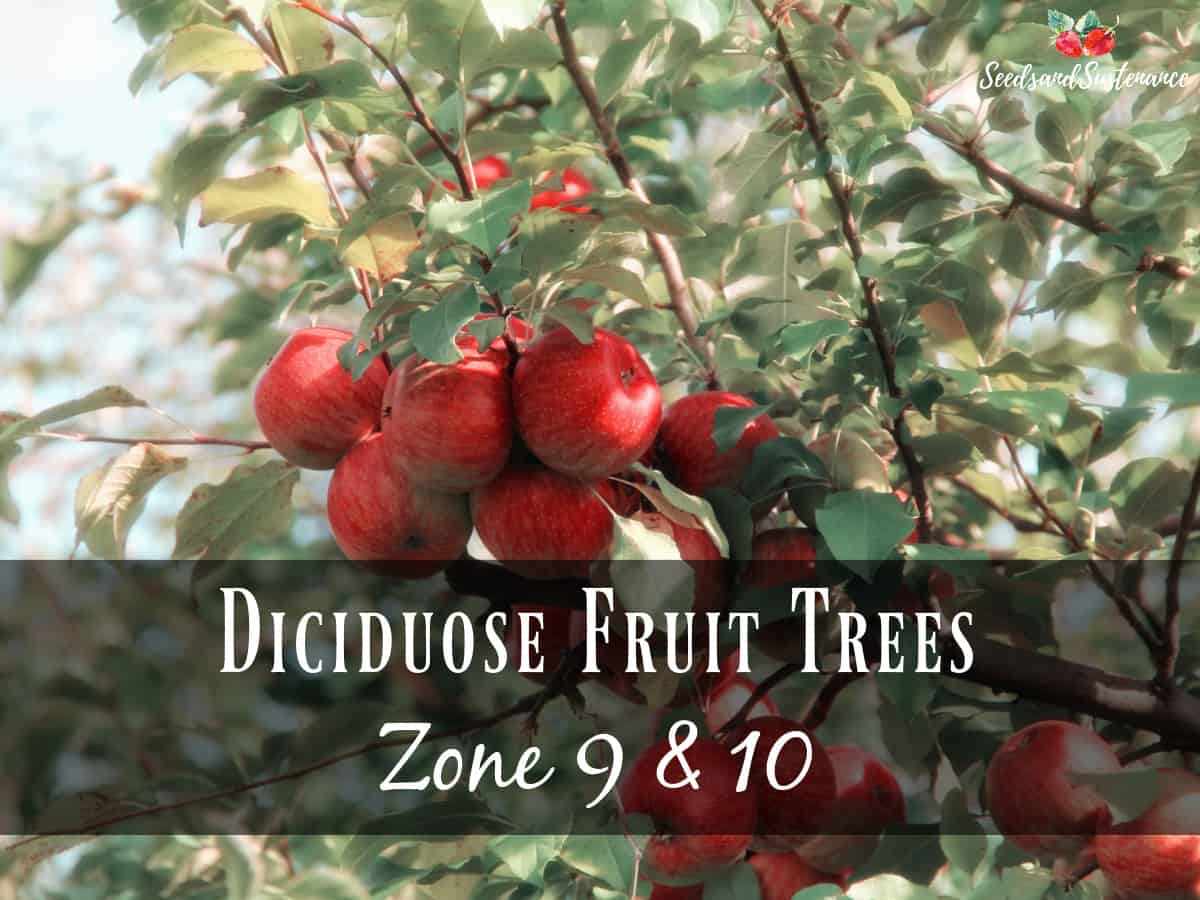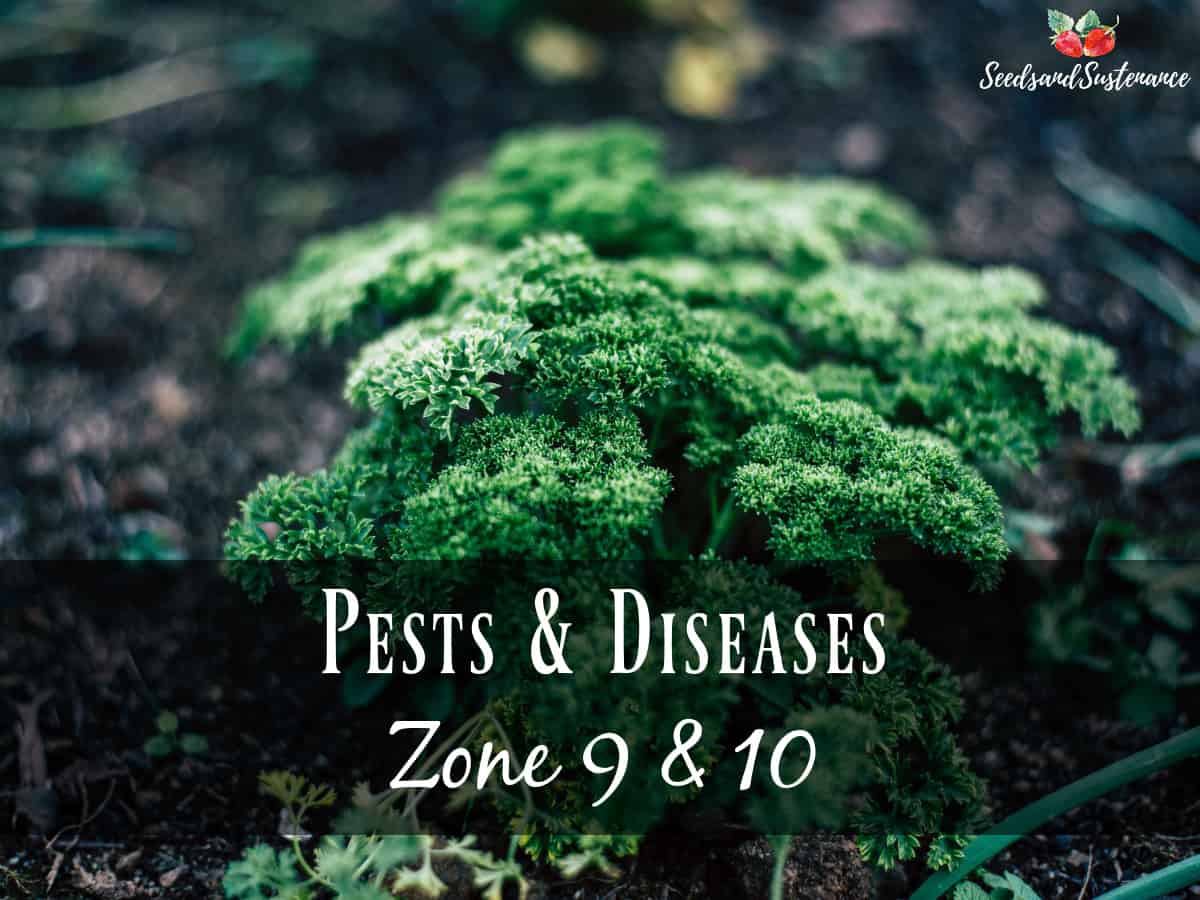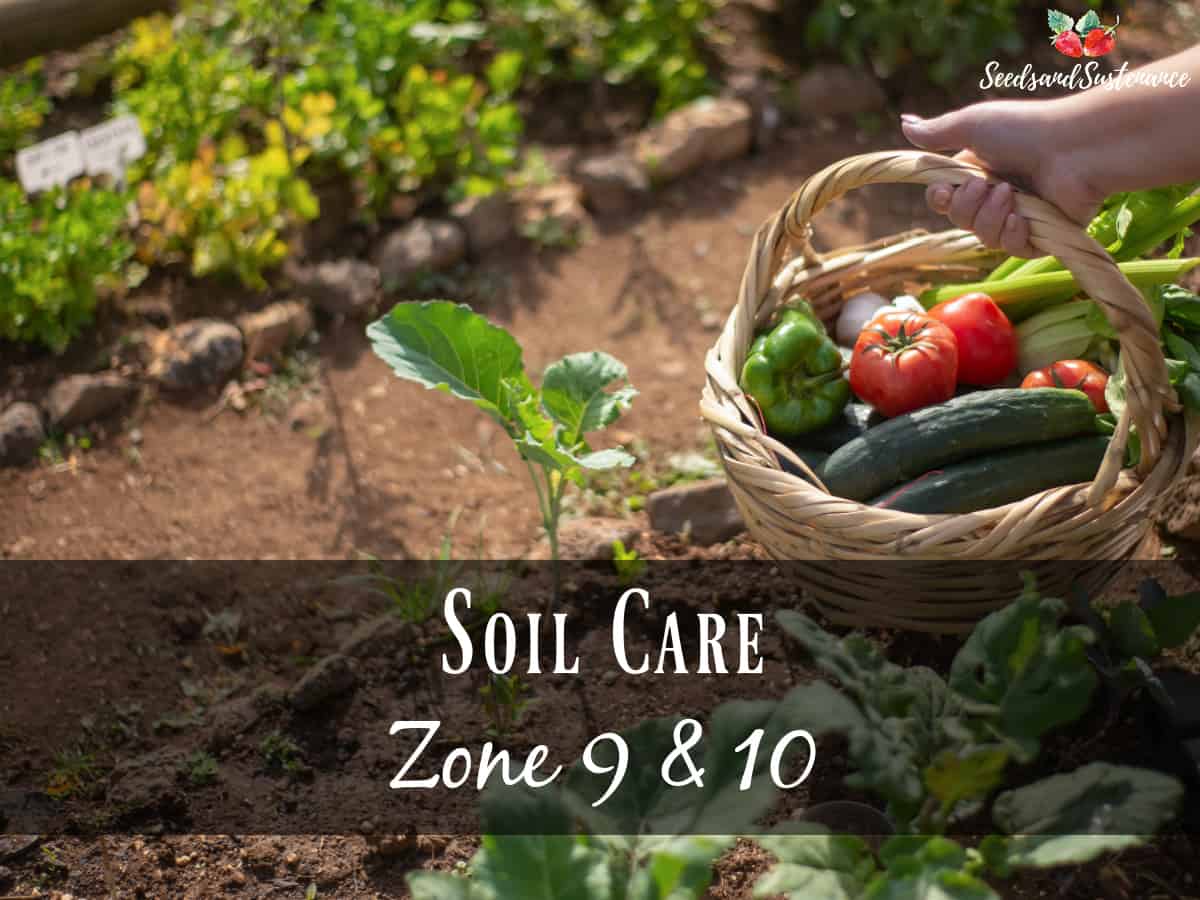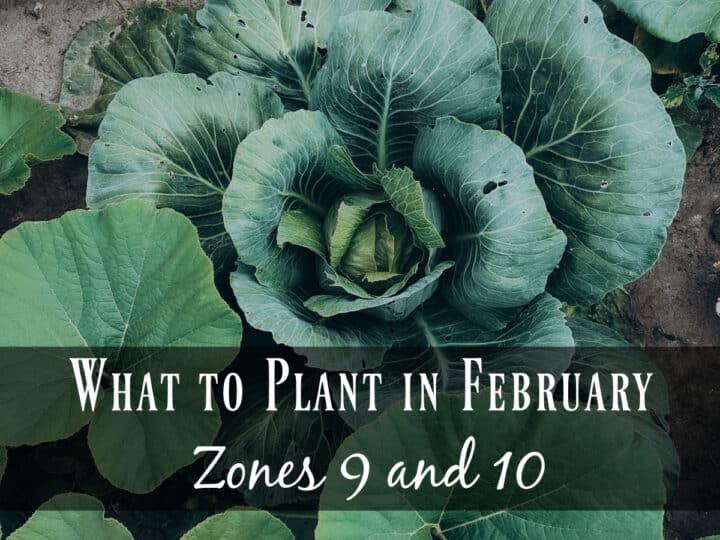
As we dive into the heart of spring, having an April gardening checklist is essential. This comprehensive guide will help you navigate through this crucial month in your garden, ensuring you stay on top of tasks and enjoy a bountiful season.
In this post, we'll explore planting annuals and summer flowers as part of your April gardening checklist. We'll discuss transitioning from cool-season to warm-season annuals and selecting the right summer flowers for your garden beds.
We will also delve into caring for geraniums by examining fertilizing techniques for optimal growth and managing rust on Martha varieties. Additionally, maintaining fruit plants such as strawberries and grapes is vital during this time; thus, we'll cover training strawberry vines effectively and implementing pest prevention measures for grapevines.
Lastly, our discussion wouldn't be complete without getting into trees, subtropicals, vegetables, herbs, and soil care!

Planting Annuals and Summer Flowers
April is the perfect time to plant annual flowers and replace spring plants with colorful summer varieties. Ensure that your garden remains vibrant by planting warm-season varieties such as petunias, lobelia, verbena, marigold, ageratum, cosmos, impatiens, coleus, torenia, and begonias.
This section will discuss transitioning from cool-season to warm-season annuals and selecting the right summer flowers for your garden.
Transitioning from Cool-Season to Warm-Season Annuals
To successfully transition from cool-season to warm-season annuals in April, follow these steps:
- Evaluate existing plants: Assess which of your current cool-season plants are still thriving or can last a few more weeks before they need replacement.
- Select appropriate replacements: Choose suitable warm-season varieties based on factors like sun exposure requirements (full sun vs partial shade) and color preferences for a harmonious look in your garden.
- Prepare the soil: Remove any dead or dying foliage from previous plantings. Amend the soil with organic matter like compost if necessary. This helps improve drainage while providing essential nutrients for new plants' growth.
- Sow seeds or transplant seedlings: Plant seeds directly into prepared beds following packet instructions regarding spacing, depth, and watering needs. Alternatively, purchase healthy nursery-grown seedlings and transplant them carefully, ensuring proper root establishment to avoid damaging the delicate roots.
Selecting The Right Summer Flowers For Your Garden
When selecting summer flowers for your garden, consider the following factors:
Color coordination: Choose colors that complement each other and create a visually appealing display. For example, combine warm shades like reds, oranges, and yellows together with cool blues, purples, and whites create a harmonious effect.
Plant height: Consider height differences when planning to ensure that taller varieties don't overshadow shorter ones as they will block sunlight, limit air circulation, and may impair growing space.
Bloom time: Select plants with staggered bloom times to maintain continuous color throughout the season. This way, as one type of flower fades, another begins its show, ensuring a never-ending parade of beauty in the garden.
Incorporating these tips into your April gardening routine will help you successfully transition from cool-season to warm-season annuals while creating an eye-catching display of summer flowers.
For successful annual and summer flower growth, selecting types suitable for the local climate and garden conditions is essential.
April is the first month of the year when we can really start setting up for those hot-weather varieties like dahlias, zinnias, cleome, gomphrena, portulaca, and lisianthus.
Be sure to fertilize and deadhead these beauties regularly to keep the profusion of blooms going.
With proper care, you can ensure that these plants will thrive throughout the season.
Key Takeaway: April is the ideal time to refresh your garden with vibrant summer annuals and flowers. To successfully transition from cool-season plants, evaluate existing ones, choose suitable replacements that suit your color preferences and sun exposure requirements, prepare the soil properly, sow seeds, or transplant seedlings - then sit back and watch nature do its thing.
Caring for Geraniums
Moving on to caring for geraniums, fertilizing them correctly will help promote strong growth. This time of year, it is also essential to manage diseases like rust to keep Martha varieties healthy.
Fertilizing Geraniums for Optimal Growth
To keep your geranium plants thriving throughout the month, it's crucial to provide adequate nutrients by applying a balanced fertilizer.
This ensures they receive equal amounts of nitrogen, phosphorus, and potassium (N-P-K) required for strong root development, lush foliage growth, and abundant flowering.
It's also a good idea to maintain slightly acidic soil conditions by alternating feedings with an acid fertilizer such as cottonseed meal or fish emulsion.
- Apply a balanced fertilizer every four weeks during the growing season.
- Maintain slightly acidic soil pH levels between 6.0 - 6.5.
- Alternate feedings with an acid-type fertilizer like cottonseed meal or fish emulsion to promote healthy growth.
Managing Rust on Martha Varieties
Rust can be a common issue among geranium plants in April, especially on Martha varieties.
To prevent this fungal disease from affecting your garden beauties, try the following routine:
- Ensure proper culture practices: Provide fresh air circulation around your plants by spacing them adequately apart from each other and pruning any overcrowded branches or leaves that may hinder airflow.
- Provide adequate sunlight: Geraniums require at least six hours of direct sunlight per day to thrive. Make sure they are planted in a location that receives ample sun exposure.
- Keep foliage dry in the evening: Water your geranium plants early in the day, allowing enough time for their leaves to dry before nightfall. This helps prevent rust spores from germinating and spreading on damp foliage.
In addition to these preventive measures, be sure to remove spent flowers at the bottom stem regularly.
This not only encourages more blooms but also prevents any potential spread of rust disease among your geranium plants.
Caring for geraniums requires proper fertilization and rust management, but with the right knowledge, you can have beautiful plants all season long.

Maintaining Fruit Plants - Strawberries & Grapes
To maintain fruiting plants such as strawberries and grapes, let's learn how to properly train vines and prevent pests from taking over.
This time of year is crucial for properly maintaining fruit varieties like strawberries and grapes to get the best harvest possible.
This involves training them effectively, preventing pests, and providing adequate nutrition through well-balanced organic fertilizers.
By closely monitoring weather conditions, you can adjust watering schedules accordingly to ensure healthy growth and abundant harvests.
Training Strawberry Vines Effectively
To get the most out of your strawberry plants in April, it's essential to trim their runners so that the plants focus their energy on growing berries.
You can either direct the runners to a clear area of soil and allow them to develop roots and then cut the vine attached to the mother plant for more strawberry plants, or you can simply remove them entirely and toss them into the compost.
To get the most fruit from your strawberries possible, follow these tips:
- Remove any dead leaves or debris from around the base of your plant.
- Gently guide runners towards supports by attaching them with soft ties or clips.
- Avoid overcrowding by regularly pruning excess foliage and maintaining sufficient space between plants.
- Line your strawberry bed with straw or pine needles to help keep the fruit off of the soil to prevent rotting and pest damage.
- Bait pests or use a Diatomaceous Earth spray to eliminate pill bugs (woodlice) and other soil-bound pests.
Pest Prevention Measures for Grapevines
Grapevines can be susceptible to various pests during April as new growth emerges; therefore, implementing preventive measures is vital for their overall health.
Common pests of grapevines include aphids, spider mites, leafhoppers, and mealybugs, so early-season inspection is key to preventing infestation.
To protect your grapevines from these unwanted visitors, you will want to:
- Inspect your grapevines early in the year for signs of pest invasion to ensure that preventive measures can be taken before pests get too comfortable.
- Introduce beneficial insects like ladybugs into your garden, which help control harmful insect populations naturally.
- Use organic pest control methods such as insecticidal soap or neem oil to target specific pests without harming beneficial insects.
Fertilizing Strawberries and Grapes
In addition to pest prevention, providing your fruiting plants with the right nutrients is crucial for their growth and fruit development.
Grapes and strawberries need to be fertilized as soon as you notice new growth with an organic all-purpose fertilizer. The second application should be 6-8 weeks after the first, and the third application another 6-8 weeks after the second.
This will ensure a bountiful harvest!
Watering
Don't forget to monitor weather conditions closely so you can adjust watering schedules accordingly, ensuring your strawberries and grapes receive adequate moisture throughout April.
Key Takeaway: This April, it's time to get your fruiting plants in shape by training their vines effectively, pruning unwanted runners, preventing pests through natural methods and organic pest control products, as well as providing them with a balanced diet of nutrients. Monitor the climate to regulate irrigation regimes for peak development.

Pruning Shrubs & Vines - Azaleas, Camellias, Gardenias, and Hydrangeas
In April, it's time to focus on pruning various shrubs and vines in your garden for optimal growth.
This includes azaleas, camellias, gardenias, hydrangeas, and wisteria.
Many shrubs and vines will be growing at full steam ahead this time of year and may begin to start overtaking the garden.
If you enjoy this wild profusion of blooms, you can leave the plants as they are as long as they are not overshadowing other plants. If you need to keep them under control, keep up with regular clipping to keep everything tidy. Full pruning should only be done after the plant's blooming cycle has been completed.
Having said this, don't forget to prune back your winter and spring shrubs and vines like jasmine and wisteria once their blooms are finished.
Maintaining Azalea Health with Proper Pruning
Azalea plants require minimal pruning but should be pruned lightly after flowering if needed.
To maintain their health and encourage new growth, remove any dead or diseased branches using clean garden tools.
Also ensure proper air circulation by thinning out dense areas of the plant.
Caring for Camellia Plants in April
Camellia plants should also be pruned back lightly after they have finished flowering.
Feed them with an acid-type fertilizer to the surface of the soil such as cottonseed meal or fish emulsion to promote healthy growth.
Keep an eye out for signs of petal blight; if you notice affected blooms on your camellia looking brown and mushy, remove them immediately to prevent the spread of disease.
Grooming Gardenias for Optimal Growth
To keep your gardenia plants looking their best during April and beyond, prune them back after they finish blooming. Remove any spent flowers along with dead or damaged wood to stimulate new growth.
Be sure to maintain proper soil pH levels by adding acidic amendments as needed.
If your gardenias are looking yellow, consider applied an iron-based foliar spray every few weeks to correct mineral deficiencies.
Hydrangea Pruning and Care Tips
In April, it's time to prune your hydrangeas for optimal growth.
Varying pruning techniques may be required, contingent on the type of hydrangea you possess. For example, bigleaf and oakleaf hydrangeas should be pruned after they finish flowering, while panicle and smooth hydrangeas can be pruned in late winter or early spring.
If you want blue flowers on your pink flowering variety, continue to apply aluminum sulfate to the soil.
April Gardening Checklist for Roses
April is the time for roses to show off their spectacular blooms. They will be huge and colorful, perfect for adding a splash of color to your garden.
Make sure you fertilize them regularly; organic granular fertilizer works best as it helps beneficial soil life thrive.
Deadhead faded flowers by pruning just above the first leaf with five leaflets. This will help encourage more blooms throughout the season.
Pest Control for Roses
Be on the lookout for pests that may be lurking around your rose bushes.
Aphids can usually be hosed off with a strong jet of water, while flower thrips may require insecticide treatment.
Keep an eye out for diseases like powdery mildew and rust, which are common this time of year - regular grooming, early removal of infested leaves, good air circulation, and full sun can all help prevent these issues from occurring or getting worse.
If fungicides are needed, opt for one of the newer organic products such as Rose Defense (a neem oil extract), E-Rase (jojoba oil) or Saf-T-Cide (straight paraffinic oil).
Adding New Roses
Now is a great time to add new potted roses or upgrade existing ones if they’re struggling - nurseries have plenty in stock with excellent selection.
Make notes now about which roses are performing well and which aren't so you'll know what varieties work best in your garden later on when you decide to switch things up again.
Rose Slug Alert
The coastal gardens should keep an eye out for rose slugs – they’re not actually slugs but rather larvae belonging to fly relatives called sawflies – they feed by chewing on foliage undersides until holes form through the leaves, so make sure you use Neem oil or organic pyrethrin sprays thoroughly applied on both sides of foliage when treating them.
Irrigation & Pruning for Roses
Irrigation needs increase as weather warms up and days get longer, so don’t forget to give your plants some extra TLC.
For bigger flowers, pinch out competing buds while they're still small, then deadhead faded ones accordingly too – remember rule of thumb is always prune just above the leaf with five leaflets.
Lastly, take care of any pests but avoid using herbicides near roses whenever possible since those could damage the delicate petals.

April Gardening Checklist for Subtropical Trees
Pruning: April is the ideal time to prune tender sub-tropical trees like ficus, coral tree, avocado and citrus. However, you should be careful not to disturb any nesting birds at this time of year. Pruning helps keep these trees healthy and encourages new growth for a more vibrant landscape.
Suckers: This month is also a great time to remove suckers from your trees – those pesky little shoots that sprout up around the base of your tree trunk or roots. Pull them out if possible or dig them up and cut them flush with the root or trunk so they don’t leave behind any stubs. This will help maintain strong roots and prevent overcrowding in your garden beds.
Planting: April is an excellent month for planting most tender subtropical trees like coral tree (Erythrina), orchid tree (Bauhinia) and trumpet tree (Tabebuia). Planting now gives these newly transplanted trees plenty of warm weather before winter arrives again so they can get established in their new home before cold temperatures set in once more.

Deciduous Fruit Trees
Fertilizing: It’s time to apply the second and final feeding for fruit tree care this month. Apple, apricot, peach, plum, etc. should be given between about ½ pound of nitrogen per inch of trunk diameter. For example: 15 pounds of 20% nitrogen if a six-inch trunk; 30 pounds of 10% nitrogen if a six-inch trunk, etc. Keep in mind that too much fertilizer can cause root burn or even kill your trees.
Thinning: Now is also the time to do the first thinning – the earlier, the better. This means twisting off any excess fruit and leaving only one every six inches or so along branches and twigs. This will help prevent overcrowding and promote larger fruits with more flavor. It may seem counterintuitive but it will actually increase your yield in the long run as well as make harvesting easier when it comes time to pick them all up from underneath those lush foliage canopies.
Pruning: Don’t forget pruning, either. Prune out deadwood or crossing branches while you’re at it - keep an eye out for any signs of disease like cankers or bark splitting, which could indicate serious problems down the line if not taken care of now. And don't worry about cutting back too much - deciduous trees are very resilient and they'll bounce right back with proper watering throughout summer months ahead.
Citrus
Fertilizing: When it comes to fertilizing citrus, you want to use a fertilizer rich in trace minerals like iron, zinc, manganese, copper and more. Organic fertilizers such as Dr. Earth are great for this purpose and should be used every month from now until July. Not only will these ingredients help promote healthy growth of your plants but they'll also provide essential nutrients for beneficial insects like honeybees that pollinate the citrus fruits.
Pest Control: Ants can be a real nuisance when it comes to growing citrus in Southern California zones 9 and 10, so it's important to keep an eye out for them on your trees and control them if necessary. While ants won't do direct harm to the fruit itself, they often farm pests such as scale, whitefly, and mealybug, which can all cause damage if left unchecked. Fortunately, there are plenty of effective methods available for controlling ants, including bait or sprays containing borax or pyrethrin-based insecticides – just make sure not to spray any pesticides that might harm beneficial insects like honeybees.
Avocados
Fertilizing: Avocado trees need to be fertilized this month, as they are putting on a lot of new growth. Depending on the size of your tree, you should apply between ½ and 1 pound of actual nitrogen per inch of trunk diameter. For example, if your tree has a six-inch trunk diameter, you would use 15-30 pounds of 20% nitrogen fertilizer or 30-60 pounds of 10% nitrogen fertilizer. It’s important to follow the instructions on the label carefully when applying fertilizer so that you don’t overfertilize and damage your tree.
Leaf Drop: It is normal for mature avocado trees to drop a lot of leaves throughout the year. This shouldn't be cause for alarm; it's just part of their natural life cycle. If you notice excessive leaf drop or discoloration in some leaves, however, then it could indicate an underlying issue with your tree and may require further investigation.
Irrigation: To keep your avocado trees healthy and happy during this warm season, make sure to water them regularly but not too much - moist soil is best. Avoid overwatering, which can lead to root rot and other problems down the road.
Planting: If you're looking to plant an avocado tree this month in Southern California zones 9 or 10 (or anywhere else for that matter), now is an ideal time due to its sub-tropical nature - avocados prefer warmer climates at planting time. Make sure there's plenty of mulch around the base, like compost or fallen leaves, in order to keep roots cool while still providing adequate moisture retention throughout dry periods.
Harvesting: Most varieties won't have fruit ready for harvest yet since we're still early into springtime here in SoCal - but certain types, such as 'Gwen' & 'Whitsell' tend towards having earlier harvests than others, so watch out for those. Keep checking periodically until fruits start appearing later down the line if all goes well with proper caretaking practices along the way.

April Gardening Checklist for Subtropical Fruits
Fruit trees that are native to the subtropics of Southern California zones 9 and 10 can provide a delicious bounty of fresh fruit throughout the year. Varieties such as citrus, avocado, pomegranate, figs, loquats, guavas, and peaches, all thrive in this warm climate.
Pruning: Pruning is essential for healthy fruit production and should be done carefully at the right time of year. Most varieties will benefit from pruning during their late winter or early spring dormancy before new growth begins. This helps keep them manageable and encourages more blooms for greater yields come harvest season. However, some varieties only bloom on old wood, so it's important to consult an expert or reference guide before pruning these plants.
Planting: Depending on your location, you may now be able to start planting your favorite subtropical fruits into your garden beds or containers. Choose a sunny spot with well-draining soil and prepare the area by removing any weeds or debris, then add compost if needed for extra nutrients. Planting too deeply can cause root rot, so make sure not to bury your seedlings deeper than they were originally planted in their pots when transplanting them into their permanent homes.
Fertilizing & Watering: Now is also a great time to fertilize newly planted fruit trees as well as those already established in your garden beds - remember not to fertilize any plants that look completely asleep until another month has passed (this includes dormant deciduous species) In terms of watering frequency; aim for deep but infrequent waterings rather than light sprinkles every day, which can lead to shallow root systems susceptible to drought stress further down the line.

April Gardening Checklist for Perennials
Selection & Planting Perennials
April is a great month for planting perennials as nurseries are filled with new and interesting varieties. Take your time to explore the selection and find the perfect flowers for your garden. Make sure to plant them in an area that receives enough sunlight, and keep in mind their eventual size when deciding where they will go. Fertilizing
Feed existing perennials regularly this month, as well as any newly planted ones. Depending on the type of fertilizer you use, you may need to fertilize more than once a month. Building up soil health can reduce how often you have to fertilize, so consider adding organic matter, such as compost or mulch, around plants before applying fertilizer if possible. Chores
Most of your perennial garden chores should already be done by now; simply enjoy their colorful blooms. Be sure to remove spent or old flowers regularly from tall spiking perennials like dahlia, delphiniums, foxglove (digitalis), kniphofia (red hot poker), liatris, true lilies (lilium), monkshood (aconitum), oriental poppy, and thalictrum (meadow rue). This will help encourage new growth throughout the season. Subtropical Perennials
April is also a good time to plant subtropical perennials like begonias, heliotrope impatiens, lamium pentas(starflower), and plectranthus. These plants prefer warmer climates but can still thrive in cooler areas with some protection during cold snaps. Late Sprouting Perennials
Some late-sprouting perennials include caladium calla (colored types), chocolate cosmos, and true lilies (lilium ). Keep an eye out for these emerging from beneath ground level over the next few weeks.
If you’re growing tall upright flowering plants like those mentioned above, make sure stakes are in place beforehand so that flower stalks don’t break under their own weight later on - tie them securely into position too.
Clematis
Pruning: When pruning clematis, it’s important to remember that each variety has its own specific needs. Generally speaking, most varieties of clematis should be pruned in late winter or early spring when the plants are still dormant. Start by removing any dead or diseased stems and then trim back all remaining stems to a height of about two feet from the ground. This will encourage new growth and help keep your plant healthy throughout the growing season. Keywords: Prune, Dormant, Diseased Stems
Fertilizing: Organic fertilizers are best for feeding clematis as they provide essential nutrients without harming beneficial soil organisms or polluting nearby waterways. For established plants apply a balanced organic fertilizer every three months during the growing season with an additional application after flowering is finished. For younger plants feed them once a month until they reach maturity at which point you can switch to quarterly applications like with mature plants. Keywords: Fertilize, Organic Fertilizer, Beneficial Soil Organisms
Watering & Mulching: Clematis need plenty of water but don’t want their roots sitting in soggy soil so make sure drainage is good before planting and mulch around your plant to help retain moisture while keeping weeds down and improving soil quality over time. Water deeply twice per week during periods of drought or if rainfall is lacking - more frequent watering may be necessary depending on your climate zone but always allow the top inch of soil to dry out between waterings for optimal health results. Keywords: Water Deeply, Mulch Around Plant
California Native Plants
Summer Care for California Native Plants
California native plants are adapted to the long, hot, and dry summer months in Southern California zones 9 and 10.
While some of these plants may still be blooming and growing well during this time, many will begin to slow down their growth as they prepare for the upcoming season. It is important to be cautious when irrigating native plants during this time, as excessive irrigation (especially in soils with a clay content) can cause major problems.
To ensure your native plant garden thrives throughout the summer months, here are a few tips you should keep in mind:
Water Wisely: When it comes to watering your native plants, less is more. During the summer months, make sure you only water them when necessary—if there has been no rain for two weeks or if the soil feels dry about an inch below the surface. Additionally, avoid overwatering as this can lead to root rot or other diseases that could damage your plants.
Mulch Matters: Applying mulch around your native plant garden helps retain moisture while also keeping weeds at bay. Make sure you use organic mulches such as bark chips or wood chips rather than synthetic ones like plastic sheeting, which can trap heat and suffocate roots over time.
Fertilize Sparingly: Fertilizing too much during the summer months can actually do more harm than good so it’s best not to fertilize at all unless absolutely necessary (for example, if soil tests show nutrient deficiencies). If you must fertilize, then opt for natural options such as compost tea or fish emulsion rather than chemical-based products, which could disrupt delicate ecosystems within your garden beds.
Prune Properly: Pruning away dead branches from shrubs and trees is essential for healthy growth but try not to prune too heavily since doing so will remove leaves needed by photosynthesizing organisms like fungi and bacteria that help break down nutrients into forms usable by our plants. Instead focus on removing deadwood from branches without cutting back too far into live tissue where possible - careful pruning now will help ensure healthier growth come fall.
Wisterias
Pruning: It's essential to keep wisterias pruned all year long for a healthy bloom. Pruning should be done in late winter or early spring before new growth begins, and it's best to avoid pruning during the blooming season as this can interfere with flowers. The most important thing is to remember not to over-prune; cutting back too much could result in fewer blooms next year.
Planting New Wisterias: When planting new wisterias, opt for grafted plants if possible - these will usually start blooming at a younger age than non-grafted varieties. Planting should take place when the plant is still in bloom so you can get an idea of what kind of flower color you'll have come next season. Make sure to provide plenty of space between your newly planted wisteria and any existing plants nearby - they need room to spread out their branches and reach their full potential.
Fertilizing & Irrigation: Wisterias don't require fertilization at this time of year; however, it may help give them a boost after flowering has finished up if desired. As far as irrigation goes, only young or newly installed plants need water right now - established ones are fine without extra hydration until summer arrives.
Fuchsias
Preparing Fuchsias for Flowering: It's time to switch out the high-nitrogen growth fertilizer and start using a balanced or slightly higher in phosphorus one. This will promote blooms and keep plants well-watered, especially during warm spells. Pinching is done at the end of last month so now you can watch your plants grow out and begin flowering.
Watch Out For Pests: Fuchsia gall mites are a serious pest of these plants that could cause puckered or distorted new growth if left unchecked. Keep an eye out for any signs of this issue and pinch it out immediately when spotted; pesticide treatment may be necessary as well. Make sure to dispose of affected areas properly so they don’t spread further.
With regards to bedding cyclamens, although not technically considered a bulb, they remain a popular choice among Orange County gardeners due to their vibrant colors and relatively low maintenance requirements. However, it is important to ensure that you keep them well-watered during particularly hot spells as they can quickly succumb to heat stress if left without moisture for too long. Once flowering has ceased, the remaining foliage should be removed in its entirety rather than following the standard protocol of leaving it until all dead parts have been cut away like other types of bulbs require.

April Gardening Checklist for Bulbs, Rhizomes, & Tubers
Bulbs
Bulbs are the most common type of flower used in Southern California gardening. These include alliums, anemone, babiana, bletilla, calla lilies, chasmanthe (also known as montbretia), daffodils, Dutch iris, freesia, hippeastrum (also called amaryllis), hyacinths and ipheion.
Planting bulbs is best done when the soil temperature has warmed up in late spring or early summer. It's important to remember that some bulbs will not come back reliably every year; these include crocus and tulips which should be pulled out after they have finished blooming.
Rhizomes
Rhizomes are underground stems that spread horizontally under the surface of the soil and produce new plants at each node along their length.
Common rhizome flowers for Southern California gardens include caladiums and tuberoses, which need warm soils to grow well so should be planted a month later than bulbs in late spring or early summer.
Tubers
Tubers are the specialized storage stems of certain seed plants with nodes from which new shoots can sprout once planted. Dahlias are one example of tubers commonly grown in zone 9 and 10 gardens with beautiful showy blooms throughout the season until frost kills them off for winter dormancy before re-emerging again next year stronger than ever.
Bedding Cyclamen:
Bedding cyclamens aren't technically classified as a bulb, but they're still popularly used by gardeners across Southern California due to their bright colors and easy maintenance requirements - just make sure you water them regularly during hot spells since they can suffer heat stress if left dry too long.
As your spring bulbs finish up with their blooms, be sure to keep watering the foliage until they naturally dry up and turn brown. Then you can trim everything back. Next year, your bulbs will come back fully refreshed!
The only bulbs that do not return reliably year after year are anemone, crocus, hyacinth, muscari, ranunculus, and tulips.
Bearded Iris
Fertilizing: Bearded irises need to be fertilized this month in order to promote better flower production. A general-purpose organic fertilizer labeled for roses is the best option, but make sure there are no insecticides or other added ingredients. This should help your bearded iris bloom even more.
Pruning: When the last flower fades from your bearded iris, it's time to trim off the faded stalks just above the foliage line. Pruning will encourage new growth and more blooms in the future. It’s a good idea to give them a “haircut” every now and then.
Dahlias (Tuberous Types)
Planting: Planting dahlia tubers is best done in early spring, when the soil has warmed up and all danger of frost has passed. Choose a full sun location and drop a little bone meal into each hole before planting. For tall varieties, put stakes in now to avoid damaging the roots later. Keep newly planted tubers moist, but be careful not to overwater until growth shows above the soil.
Fertilizing: When the foliage is a few inches out of the ground, begin fertilizing. Use a liquid or granular organic fertilizer that is low in nitrogen and high in phosphorus; fish bone meal is excellent for this purpose as it will provide both nutrients while also helping with root development.
Pruning: Once your dahlias are established, pruning becomes important for keeping them healthy and producing more blooms throughout the season. When stems are about eight or ten inches tall, pinch off the top set of leaves - this encourages branching and produces more flowers overall. Additionally, deadhead spent blooms regularly to encourage new growth as well as prevent seed production which can sap energy from other parts of the plant.
Cannas
Cannas are a beautiful and easy-to-grow perennial flower that can be grown in Southern California zones 9 and 10. They prefer full sun; but will tolerate partial shade. The foliage is lush and tropical looking with large paddle-shaped leaves, usually variegated in shades of green, yellow, or pink. Cannas come in many different varieties ranging from dwarf to tall plants up to 8 feet tall.
Planting: Plant cannas bulbs about 4 inches deep in well-drained soil that has been amended with organic matter such as compost or manure. If planting multiple bulbs space them at least 18 inches apart for optimal growth. Water regularly until the plants become established, then water only when the soil feels dry to the touch.
Fertilizing: Fertilize your cannas every 6 weeks during their growing season (spring through summer) using an all-purpose organic fertilizer formulated for flowering plants like 5-10-5 or something similar. This will help promote blooms throughout the season as well as keep your cannas healthy and vigorous looking.
Pruning & Deadheading: Prune off any dead or dying leaves throughout the growing season to encourage new growth and remove spent flowers (deadhead) after they have finished blooming if desired to prolong flowering time into fall-winter months, depending on where you live within zone 9 and 10 range.
Pests & Diseases: Cannas are relatively pest-free, however, aphids may occasionally appear, so check regularly for signs of infestation and treat accordingly with an insecticidal soap spray if needed - this should take care of any problems quickly. As far as diseases go, watch out for fungal issues such as powdery mildew, which can occur if temperatures get too hot and humid; simply provide adequate air circulation around your plants by spacing them further apart than usual if possible - this should help prevent any outbreaks from occurring.
Tuberous Begonias
Sprouting: It's time to check on the tubers you planted last month. If they've sprouted two to three inches, it's time to carefully scoop them out with a spade and transfer them into baskets, pots, or well-drained bedding areas. This is an important step in ensuring your begonias thrive throughout the summer and fall months.
Fertilizing: Tuberous begonias are heavy feeders, so be sure to give them plenty of nutrition with a balanced fertilizer. To keep their soil pH low, periodically mix in an acid fertilizer too. Keep an eye on how much you're feeding; too little can stunt growth while too much can cause root burn.
Watering: These plants need lots of water but not enough for their roots to get soggy – aim for rich yet well-drained soil that dries slightly between watering sessions. Begonias love humidity, so if possible, mist the leaves every day or two during hot spells, as this will help keep them blooming all season long.

April Gardening Checklist for Tropical and Subtropical Plants
Tropical and Subtropical Plant Care
It's time to give your tropical and subtropical plants the attention they deserve. Now is the perfect time for fertilizing, pruning, and watering these hardy varieties of garden plants.
With a little bit of TLC, you can ensure that your plants will thrive throughout the summer months.
Fertilizing: Many tropical and subtropical garden plants benefit from an application of fertilizer in early spring before new growth begins. Be sure to use a fertilizer specifically formulated for these types of plants; many contain micronutrients like iron or magnesium, which are essential for healthy plant growth. Avoid over-fertilizing as this can lead to burning or even killing your beloved greenery.
Pruning: This is a great month to do any serious hibiscus pruning if needed. Pruning helps keep these large shrubs in check by removing dead wood and controlling size and shape while encouraging more blooms come summertime. It’s important not to overdo it though; too much pruning can reduce flowering potential, so be careful when snipping away at those branches.
Watering: As temperatures begin to rise with the onset of spring weather comes increased water needs for most tropical and subtropical garden plants – especially during dry spells or periods of intense heat waves. Make sure you water deeply but infrequently; this encourages strong root systems, which make your greenery better able to survive drought conditions later on down the line.

April Gardening Checklist for Vegetables
Now is the time to start planting your favorite vegetables in Southern California zones 9 and 10. Planting times vary depending on the type of vegetable, but many can be planted now, including tomatoes, peppers, eggplant, squash, beans, cucumbers and melons. Plant seeds directly into the soil or use transplants for a head start. For herbs like basil and oregano you can either plant from seed or buy starter plants at your local nursery. Be sure to give them plenty of room to grow.
Artichokes
Artichokes are a great addition to any Southern California garden. Now is the perfect time to plant artichoke plants from gallon containers, and you’ll be able to harvest fruit this year. If your artichoke was planted earlier this season or re-growing from last year, make sure to remove any suckers on the plant for larger fruit production. You can also give away these suckers as gifts or replant them elsewhere in your garden.
Tomatoes
Planting tomatoes from transplants now is an excellent way to ensure a steady supply of produce over several months. With hundreds of varieties available, it’s important to choose carefully and consider which ones will do best in your climate zone 9 and 10.
Potatoes
Mound spring potatoes that were planted last month for improved growth and development.
Successive Plantings
For an uninterrupted supply of vegetables all season long, try planting successive crops every couple of weeks apart so that something new is always coming up.
Harvesting Early Potatoes & Asparagus
If you planted potatoes last fall, they may be ready for harvest now; similarly, if you have a well-established asparagus patch, early April is a great time for harvesting spears (just remember not take any during the first two years after planting).
Warm Season Vegetables & Fruits
This month provides the perfect opportunity for almost any warm-season vegetable like beans, cucumbers, eggplants, okra, peppers, salsify, squash, sunflower, and tomatoes to thrive and can be planted by seed or via transplants.
Corn, lima beans, jicama, melons, and pumpkins should only be planted from seed, however.
Along coastal areas, cool-season veggies like arugula, lettuce, peas, and cabbage family members can still thrive while heat-loving vegetables such as corn melons peppers pumpkins may require extra care, such as positioning near south-facing walls.
Corn Pollination
When planting corn, remember that cross-pollination must occur, so 12 plants are needed at a minimum but 20+ (planted in a group, not a row) would provide better results – succession planting every 3 - 4 weeks will ensure continuous harvests throughout the summertime.
Since most annual veggies are shallow-rooted and quick growing, feed them regularly with balanced organic fertilizer.
Last, but not least, controlling weeds before they get out of hand is essential.

April Gardening Checklist for Herbs for Spring Planting
Spring is the ideal time to plant a variety of herbs in Southern California zones 9 and 10.
Many perennial herbs are well-suited to spring planting, including marjoram, oregano, rosemary, sage, thyme, catmint, catnip, chamomile, comfrey feverfew lavender lemon balm lemongrass lemon verbena St. John’s wort tarragon and thyme.
Cool-season annual herbs such as anise, arugula, borage, chervil, cilantro, dill, and fennel can also be planted now for a quick crop before summer arrives.
Summer savory can also be planted this month while winter savory should wait until fall since its flavor is generally considered inferior.
Rejuvenating Old Herbs
Many old or tired herbs can benefit from being given a hard trim in April; these include chamomile, chives, lemon balm, lemongrass, marjoram, mint, oregano, salad burnet, sorrel, St. John’s wort, thyme, and watercress which should all be cut right back almost to the soil line with fertilizing they will recover quickly.
Other plants like catmint, catnip, feverfew, lemon verbena, rosemary, rue, and sage need only light pruning, while lavender should not be trimmed at all if possible.
Taking care when cutting back your herb garden ensures that it continues looking lush throughout the season without sacrificing any of its fragrant flavors.

Beneficial Insects and Wildlife
Ladybugs and lacewings are two of the most beneficial insects for your garden. They can be released this month to help reduce pest populations without using pesticides. These bugs feed on pollen, so planting a few flowers they enjoy will encourage them to stick around.
Yarrow, alyssum, chamomile, white clover, paludosum daisy, cosmos, lantana and Queen Anne’s lace are all great options.
Additionally Trichogramma wasps can be used to control caterpillar populations if needed - just make sure you space out releases every 30-45 days.
Frogs, toads and lizards love hanging out in gardens too. They act as natural predators for pests like slugs and snails that could otherwise wreak havoc on your plants. Plus they're fun little critters to watch while you work outside.
And don't forget about birds either - some species eat insect pests which is always helpful when it comes to keeping your garden healthy. So try adding a bird bath or two along with some feeders near trees or shrubs in order to attract more feathered friends into the mix.

Pests & Diseases
Prevention is the best medicine when it comes to diseases, so make sure your soil is in tip-top shape by applying organic fertilizers like composted manure or worm castings every year, at least three inches deep into the topsoil around each plant before planting season begins.
Furthermore, watering directly onto the ground rather than overhead will help reduce moisture levels on leaves which reduces the risk of fungal growth from spores splashing up onto them from wet soil below them. Additionally, keeping weeds away from your plants as they may be a potential host for some types of pathogens that could spread to other parts of your garden with alarming speed if not taken care of promptly.
Finally, pruning off dead leaves or branches regularly throughout the growing season should minimize any chances of infection spreading further than what was already present initially.
Pests
Pests can be a major problem in Southern California gardens. The most common pests include snails and slugs, aphids, caterpillars, fuchsia gall mites, giant whiteflies, and Eugenia psyllid.
To control these pests organically you should trap or hand-pick snails and slugs; release ladybugs to prey on aphids; introduce beneficial insects according to the needs of your garden; spray with BT if necessary for caterpillars; manage fuchsia gall mites as needed; look for giant whiteflies and control it now with neem oil or pyrethrin spray; keep an eye out for Eugenia psyllid which can also be managed with beneficial insects.
Additionally, adding more plants that attract beneficial insects and pollinators will help keep pest populations down.
Diseases
Common diseases in Southern California gardens are powdery mildew, botrytis blight (gray mold), rusts, blights (late blight), black spot fungus on roses, verticillium wilt in tomatoes, peppers, eggplants, potatoes, beans, and strawberries.
Anthracnose disease in vegetables such as cucumbers & squash and bacterial leaf spots caused by Pseudomonas bacteria.
If your soil pH has become too high (alkaline), there are two effective solutions to consider this month: utilizing low-pH mulches over the surface area or introducing sulfur, which functions as a naturally occurring acidifying agent that may need replenishing depending on desired levels of acidity.

Soil Care
Mulching: Mulch is an essential component of any garden, especially in Southern California zones 9 and 10. A thick layer of organic mulch should be maintained on top of the soil year-round, averaging about two inches deep. This will help to cool the root systems from the hot temperatures ahead, reduce irrigations by as much as half this summer, reduce weed growth, and improve both soil life and quality. Now is a great time to add additional mulch if needed.
Mycorrhizae Inoculation: Inoculating your soil with beneficial mycorrhizae can have a big impact on plant health and vigor. It's best done during warmer months when the soil temperature is just right for quick establishment - making now an ideal time. To inoculate established areas quickly and easily use mycorrhizae “tablets” - poke a hole near each plant with a ½” or ¾” rod or stick then drop in one tablet per hole before pushing it back down with the stick. I like this mycorrhizal product for my garden.
Fertilizers & Insecticides: When it comes to fertilizers, I suggest avoiding very high-analysis formulations like 10-55-10, 10-30-10, etc., which can inhibit or even destroy vital soil life that's so important for sustainable gardening success. I also recommend steering clear of systemic fertilizer and insecticide combinations (especially popular with roses) since they move into the soil, interfering with its invisible inhabitants too. When using insecticides, opt for only those necessary and select the least damaging products available whenever possible.
Composting: Creating compost at home is one of the best ways to add nutrients back into your garden while suppressing disease levels improving texture structure, retaining more moisture, plus reducing nematode populations too. All you need are leaves, grass clippings, clean garden waste, and kitchen produce scraps that can be composted and then returned directly back into your garden beds come springtime.
Soil pH Management: If your soil pH has become too high (alkaline) there are two effective methods you could try out this month; either use low pH mulches over the surface area OR incorporate sulfur which acts as an acidifying chemical naturally occurring in soils already but may need topping up from time to time depending on how acidic you want things around here.
Frequently Asked Questions About the April Gardening Checklist
What can I put in my garden in April?
In April, you can plant a variety of flowers, vegetables, and herbs. Some popular options include warm-season annuals like marigolds and petunias, summer-blooming perennials such as daylilies and coneflowers, cool-season vegetables like lettuce and peas, and herbs including basil and cilantro. Be sure to check your local plant hardiness zone for specific planting recommendations.
How do I prepare my garden in April?
To prepare your garden in April:
- Clean up any leftover debris from winter.
- Till the soil to improve aeration and drainage.
- Add compost or other organic matter to enrich the soil.
- Test the soil pH level with a kit or by sending it to a lab; amend if necessary.
- Prune shrubs that have finished blooming.
Is April National Gardening Month?
Yes, April is recognized as National Gardening Month in the United States. It's an opportunity for gardening enthusiasts to celebrate their passion for plants while encouraging others to explore this rewarding hobby. Many organizations host events during this month; visit the official website of National Garden Bureau, which promotes gardening education throughout North America.
What are some things that need to be done in the garden in spring?
Springtime gardens require several tasks:
- Weeding out unwanted growth
- Fertilizing lawns, flowers, and vegetables
- Planting new seeds or transplants
- Mulching to conserve moisture and suppress weeds
- Watering plants as needed, depending on rainfall and temperature
- Pest control measures for insects, diseases, and wildlife
You may also enjoy reading:
What to Plant to Plant in March in Southern California






Leave a Reply